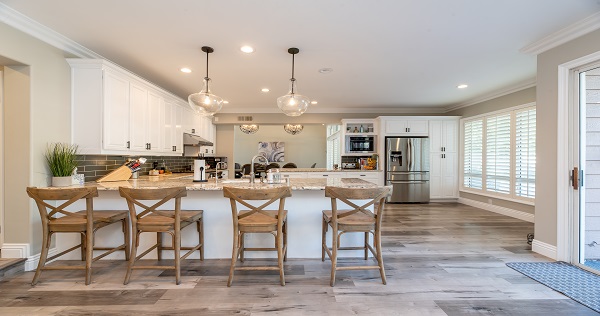

As soon as winter arrives, keeping your deck clean and safe becomes a challenge. Ice and snow increase the chances of slip and fall, which can cause serious safety risks. But once you know how to prevent and treat slippery decking surfaces, the adverse weather will no more haunt you.
If you live in moist climate regions, then the growth of organisms like mould and mildew will expedite. However, after discussing this issue with experts, we’ve come up with six quick ways to make your decking non-slip in winter.
1. Clear leaves and debris from your deck:
The focal cause of the slippery deck is algae. Generally, dirt, leaves, and twigs together create the environment for algae to place their foot on your beautiful deck. But you can turn them down by sweeping off leaves and debris. It’s simple! Take a stiff broom, and remove all the trash from your deck after storm or rain.
Additionally, you can clear debris from gaps between the boards with a putty knife to halt moisture and algae growth. Cleaning the deck on a sunny day when it will dry quickly is a good part of regular maintenance.
2. Keep the decking surfaces snow-free:
Well, you cannot stop clouds from dropping snow on earth, but you can surely keep your deck surfaces free from snow. Otherwise, the piled-up snow can cause many problems, and also will make walking on the floor unsafe. So, shovel them from your deck on a timely basis. You can even use a rubberised or soft-edged shovel to avoid scratching and damaging the surface.
Always bear in mind that salt can ruin the deck, so never use it for ice removal.
3. Use safe techniques for ice removal:
As said in the above point, a shovel can help you to remove ice from your deck. But for that, you need to take some precautions, which we have listed below:
• You must not use a metal shovel as that might scratch your deck surface, leading to damage
• Do not use shovel across your deck boards as it can increase the risk of catching the edge of the board, causing damage
• Make use of a broom for light snow only
• Do not spread snow on the deck
4. Use detergent to remove mould and algae:
Spring and fall are good times to look for undesired organism's growth on your decking. You can start with a cheap and easy fix for small patches of algae, mould, and mildew.
So, take one cup of laundry detergent and mix it with 2-3 gallons of water. And spread it with a mop or a pump sprayer. Let it sit for 15-30 minutes before scrubbing the floor with your stiff broom.At last, rinse the area thoroughly with a hose. Do not forget to adjust the amount of solution according to the size of your deck.
5. Apply anti-slip products:
If you are looking for a little more slip resistance for your high foot traffic areas, then apply anti-slip strips. They’ll provide added grip and prevent you from slipping. There are also alternatives to strips. Some products are typically formulated either with sand or aggregate mixed into resin or paint. You can apply these coatings like deck stain.
You can even apply any one of them on steps if you are planning to use it throughout the winter.
6. Spread sand when the sealer is wet:
One of the cheapest ways of making your deck surface less slippery is sprinkling sand onto a wet sealer. It will help you to keep your deck in good condition for up to 24 months, depending on how much you use the deck. In case the sand is slackened by the foot traffic, then you need to brush off your deck periodically to prevent scratching.
More things to consider during winter:
First of all, if you’re planning to change your old deck before winter, then first research which is best – timber or composite decking. After installing it, you can merely place a tarp over your good-looking deck and furniture during winter. It will work well if you’re not going to use them. Honestly, this may not be a feasible option for those who have a hot tub, grill, or fireplace on their decks.
You can even place the outdoor furniture and other valuable items in a shed or garage to protect them from the snow. Along with this, start following the above ways and protect yourself from slipping and tripping.
Author Bio:
Hi, I am Mike Morleye. As a professional writer and blogger, I share my experiences and knowledge on diverse topics through writing. I always aim to provide information in a readable, understandable, and appealing format.


